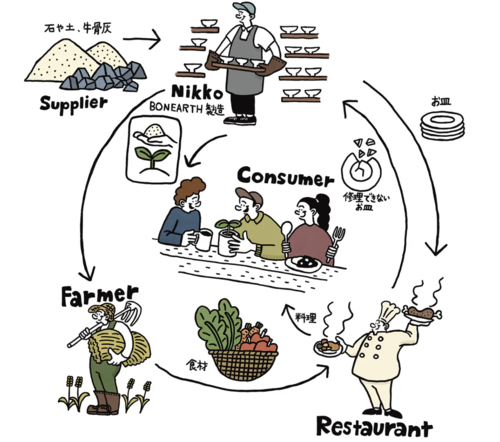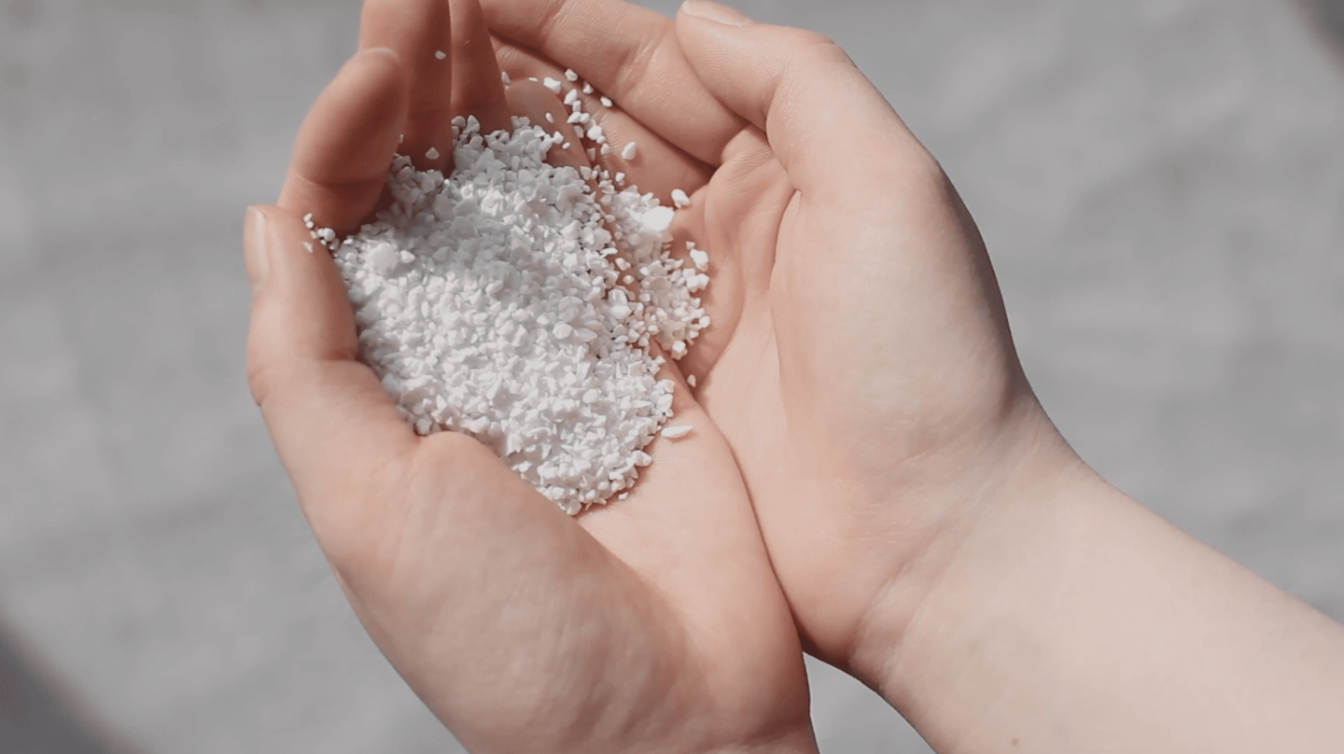J-STORIES - Bone china is admired for its creamy white color and luminous, translucent sheen. Although known as the strongest porcelain or china ware, bone china can break, and when it does it is often thrown away. Now, a Japanese tableware manufacturer with a history stretching back over a century has found a new way to recycle old ceramics.
Bone china gets its name from the cow bone ash used in its manufacture, a substance rich in tricalcium phosphate, which is commonly used as a fertilizer. The company, Nikko, which was founded in 1908, has developed a way to turn discarded china into fertilizer. In February, the porcelain-derived fertilizer was certified for use by Japan’s Ministry of Agriculture, Forestry and Fisheries.
Nikko’s initiative could solve two problems.
First, Japan does not mine any phosphate, so imports it from China and elsewhere. This makes the country's agriculture vulnerable to fertilizer price hikes. Second, long before the coronavirus pandemic reduced demand from the restaurant sector, Japanese tableware manufacturers were already facing fierce competition from low-priced imports.
Noriko Kobayashi, a marketing manager at Nikko, told J-Stories that the company is seeking ways to stay in business for another 100 years, while fulfilling the environmental commitments of its corporate philosophy.
However, it may be difficult for Nikko to expand the initiative overseas as the legal standards for fertilizer vary from country to country, explained Mikio Takimoto, who leads the company’s R&D division.
“But even if it’s hard to make fertilizer to meet each country’s standards, we’d like to work with various partners to expand this project,” said Takimoto.
.jpg)
For now, the company is recycling tableware that fails its production quality control tests, but it is also looking at recovering old tableware from restaurants and hotels. Such discarded ceramics are not only those made by Nikko itself, but potentially other companies, too.

Nikko’s own tableware is particularly rich in tricalcium phosphate, containing 50% of the substance versus the 30% legal minimum that is set for Japanese porcelain. Indeed, it was this higher content that inspired the company's fertilizer project.
In addition to fertilizer production, however, the recycled tricalcium phosphate could be used to make new bone china tableware. That means old restaurant tableware could be used to make their replacements, or as fertilizer to grow vegetables that are served in the restaurant.
It’s a deliciously ingenious example of circular recycling that links farmer, diner and tableware manufacturer.
Translation and Editing by Tony McNicol
Top page photo by Nikko
For inquires about this article, please contact us at jstories@pacificbridge.jp
***
***
Click here for the Japanese version of the article.

![[Tokyo Updates] Is Hill-Farmed Salmon Here to Save Us?](https://storage.googleapis.com/jstories-cms.appspot.com/images/173258722885374_09952-thumb-1600xauto-10881_smallthumbnail.jpeg)
![[Tokyo Updates] Old and Full of Potential: Why a Swedish Model Is Reviving Abandoned Houses in Tokyo](https://storage.googleapis.com/jstories-cms.appspot.com/images/1732603609687d6b0a861ef75d954729578323092323fe00ad55e-thumb-1600xauto-10186_smallthumbnail.jpg)
![[Tokyo Updates] Making Space Development Open for All](https://storage.googleapis.com/jstories-cms.appspot.com/images/1732521298402c3af387cf9df027b91f0e9f2626b300713b93850-thumb-1600xauto-10594_smallthumbnail.jpg)


![[Podcast] Japanese technology to supercharge human fertility (Part 4)](https://storage.googleapis.com/jstories-cms.appspot.com/images/1768443226894unnamed-5_bigthumbnail.jpg)

![[Podcast] Japanese technology to supercharge human fertility (Part 3)](https://storage.googleapis.com/jstories-cms.appspot.com/images/1766558713084place-for-scientific-research-2025-03-07-14-08-49-utc%20(1)_bigthumbnail.jpeg)
![[Interview: Part 2] A digital approach to tackle child hunger in Japan with dignity](https://storage.googleapis.com/jstories-cms.appspot.com/images/1766130666509unnamed_bigthumbnail.jpg)
![[Podcast] Japanese technology to supercharge human fertility (Part 2)](https://storage.googleapis.com/jstories-cms.appspot.com/images/1765863548035unnamed-7_bigthumbnail.jpg)
![[Podcast] Japanese technology to supercharge human fertility (Part 1)](https://storage.googleapis.com/jstories-cms.appspot.com/images/1765440905082unnamed_bigthumbnail.jpg)
_bigthumbnail.jpeg)


![[Interview] When digital and physical worlds meet](https://storage.googleapis.com/jstories-cms.appspot.com/images/1747974430456unnamed-2_smallthumbnail.png)

![[Interview] How Japanese musician Grover turned his passion of ‘sound’ into a health-tech startup](https://storage.googleapis.com/jstories-cms.appspot.com/images/1746181078493R7__1407_smallthumbnail.jpg)


_smallthumbnail.jpeg)

![[Interview: Part 1] From nourishing souls to feeding the hungry](https://storage.googleapis.com/jstories-cms.appspot.com/images/1763695595492unnamed_smallthumbnail.jpg)

